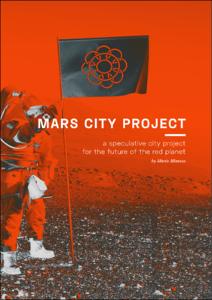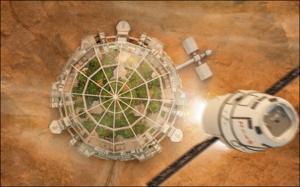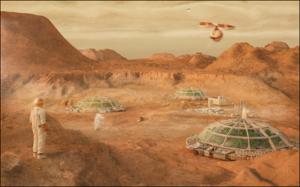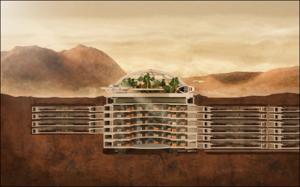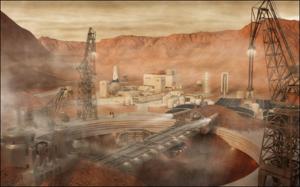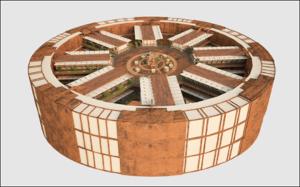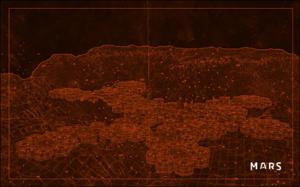Mostra el registre d'ítem simple
Mars City Project: a speculative city project for the future of the red planet
| dc.contributor | Fort Mir, Josep Maria |
| dc.contributor.author | Mimoso López, Mario |
| dc.date.accessioned | 2019-07-31T07:47:39Z |
| dc.date.available | 2019-07-31T07:47:39Z |
| dc.date.issued | 2019-06 |
| dc.identifier.uri | http://hdl.handle.net/2117/167153 |
| dc.description | Màster universitari en Disseny -- Contemporary Design |
| dc.description.abstract | We live in a world which changes faster than our grasp of it. In few years, we have managed to radically transform the way we live, our values, priorities, power and ideas, and this change has had unexpected consequences on Earth. In the future, we may just need to travel to another planet in order to survive. That is the main thesis of this project: humans will be able to live on Mars. To prove it, I went through a deep research on three basic pillars of this project: future studies and speculative design, the red planet and cities. Besides, I carried a parallel research on contemporary and past futurists and speculative designers who worked on the urban scale, such as Archigram, Paolo Soleri, Buckminster Fuller or Jacques Fresco. They served as a source of inspiration and I tried to mix everything that I found interesting on their projects on my personal proposal. After having gathered all the necessary information, I developed a proposal for a speculative future city on Mars. The result is a huge underground facility that acts as an organism/system that can be adaptable to the conditions and grow as needed: a self-contained, self-replicated and self-sustainable city. The city will be located on Valles Marineris, and it will provide shelter, protection from radiation, water and oxygen as well as food and everything needed to sustain life on the Red Planet. In order to do this, the city will have the highest technologies, as well as the best building and boring methods that are being developed nowadays and which are expected to flourish on years to come, such as 3D printing or artificial intelligence. It is important to say that as a speculative project, many of the tecnologies and the ideas expressed on this thesis are not available at the moment, and may not be available in the future either. However, the main goal of a speculative project is to generate debate and spark creativity and imagination on the audience, and therefore, technical details are not taken into real consideration. It is important as well to point out that the final design of the proposal is based on the scenario created for this specific project, but since there are infinite possible scenarios, there would be infinite possibilities of city designs. The current proposal is just one among many valid options. Finally, the thesis ends with a compilation of the conclusions that I discovered throughout the development of both the theoretical and the design part of the project. First, humans will be able to live on Mars but only in the long-term future and if provided with the required technologies; second, in a context as challenging and dangerous as Mars, cities will recover their old and lost status of “paradises”. |
| dc.description.abstract | Vivimos en un mundo que cambia más rápido de lo que somos capaces de asimilar. En pocos años hemos sido capaces de transformar radicalmente la manera en que vivimos, nuestros valores, prioridades, poder e ideas, y este cambio ha tenido consecuencias inesperades en la Tierra. En un futuro, quizá necesitemos viajar a otro planeta para sobrevivir. Ésta es la hipótesis del proyecto: la humanidad podrá vivir en Marte. Para demostrarlo, he realizado una profunda investigación sobre las tres bases en las que se sustenta el proyecto: el diseño especulativo y ‘futures studies’, el Planeta Rojo y las ciudades. Además, he estudiado paralelamente futuristas y diseñadores especulatives contemporáneos y pasados que trabajaron con la escala urbana, como Archigram, Paolo Soleri, Buckminster Fuller o Jacques Fresco. Esto me ha servido como fuente de inspiración y he intentado condensar todo lo que me parecía interesante de sus proyectos en mi propia propuesta personal. Tras reunir toda la información necesaria, desarrollé una propuesta para una futura ciudad especulativa en Marte. El resultado es una gran estructura subterránea que actúa como organismo/sistema capaz de adaptarse a las condiciones necesarias y crecer como sea necesario: una ciudad auto-contenida, auto-replicada y autosuficiente. La ciudad estará ubicada en Valles Marineris y proporcionará refugio,protección contra la radiación, agua y oxígeno, así como alimento y todo lo necesario para mantener la vida en el Planeta Rojo. Para ello, la ciudad contarà con las tecnologías más avanzadas y con los sistemas de construcción y excavación que están siendo desarrollados en la actualidad y que se espera que acaben de florecer en el futuro, como la impresión 3D o la inteligencia artificial. Es importante destacar que como proyecto especulativo, muchas de las tecnologías y las ideas expresadas en el texto no están disponibles en la actualidad y podrían no estarlo en el futuro. Sin embargo, la principal meta de un proyecto especulativo es generar debate y potenciar la creatividad y la imaginación en los lectores, y por lo tanto, los detalles técnicos no han sido demasiado tenidos en cuenta.También es importante subrayar que la propuesta de diseño final està basada en un escenario específico yconcreto, pero como existen infinitos escenarios posibles, también existent infinitas soluciones de diseño. Esta propuesta solamente es una entre muchas opciones válidas. Finalmente, el trabajo acaba con una compilación de las conclusions extraídas del desarrollo del mismo. Primero, que la humanidad podrá vivir de forma permanente en un futuro lejano en Marte siempre que cuente con la tecnología necesaria; y segundo, que en un contexto como el de Marte, las ciudades recobrarían su antiguo estatus de "paraísos”. |
| dc.language.iso | eng |
| dc.publisher | Universitat Politècnica de Catalunya |
| dc.rights | Attribution-NonCommercial-NoDerivs 3.0 Spain |
| dc.rights.uri | http://creativecommons.org/licenses/by-nc-nd/3.0/es/ |
| dc.subject | Àrees temàtiques de la UPC::Arquitectura::Disseny |
| dc.subject | Àrees temàtiques de la UPC::Urbanisme |
| dc.subject.lcsh | Mars (Planet) |
| dc.subject.lcsh | City planning – Mars (Planet) |
| dc.subject.other | Mars city |
| dc.subject.other | Speculative design |
| dc.subject.other | Design fiction |
| dc.subject.other | Futures studies |
| dc.subject.other | Arcologies |
| dc.subject.other | City design |
| dc.subject.other | Future city |
| dc.subject.other | Multiplanetary civilization |
| dc.subject.other | Ciudad en Marte |
| dc.subject.other | Diseño especulativo |
| dc.subject.other | Diseño ficción |
| dc.subject.other | Estudios del futuro |
| dc.subject.other | Arcologías |
| dc.subject.other | Diseño de ciudades |
| dc.subject.other | Ciudades del futuro |
| dc.subject.other | Civilización multiplanetaria |
| dc.title | Mars City Project: a speculative city project for the future of the red planet |
| dc.type | Master thesis |
| dc.subject.lemac | Mart (Planeta) |
| dc.subject.lemac | Disseny urbà – Mart (Planeta) |
| dc.rights.access | Open Access |
| dc.audience.educationlevel | Màster |
| dc.audience.mediator | Escola Tècnica Superior d'Arquitectura de Barcelona |
| dc.audience.mediator | Escola Superior d'Enginyeries Industrial, Aeroespacial i Audiovisual de Terrassa |
| dc.audience.mediator | Escola Politècnica Superior d'Enginyeria de Vilanova i la Geltrú |
| dc.audience.mediator | Universitat de Barcelona. Facultat de Belles Arts |
| dc.audience.degree | MÀSTER UNIVERSITARI EN ESTUDIS AVANÇATS EN DISSENY-BARCELONA (Pla 2017) |
Fitxers d'aquest items
Aquest ítem apareix a les col·leccions següents
-
Màster universitari en Estudis Avançats en Disseny-Barcelona (MBDesign) [174]
Titulació interuniversitària UPC-UB


